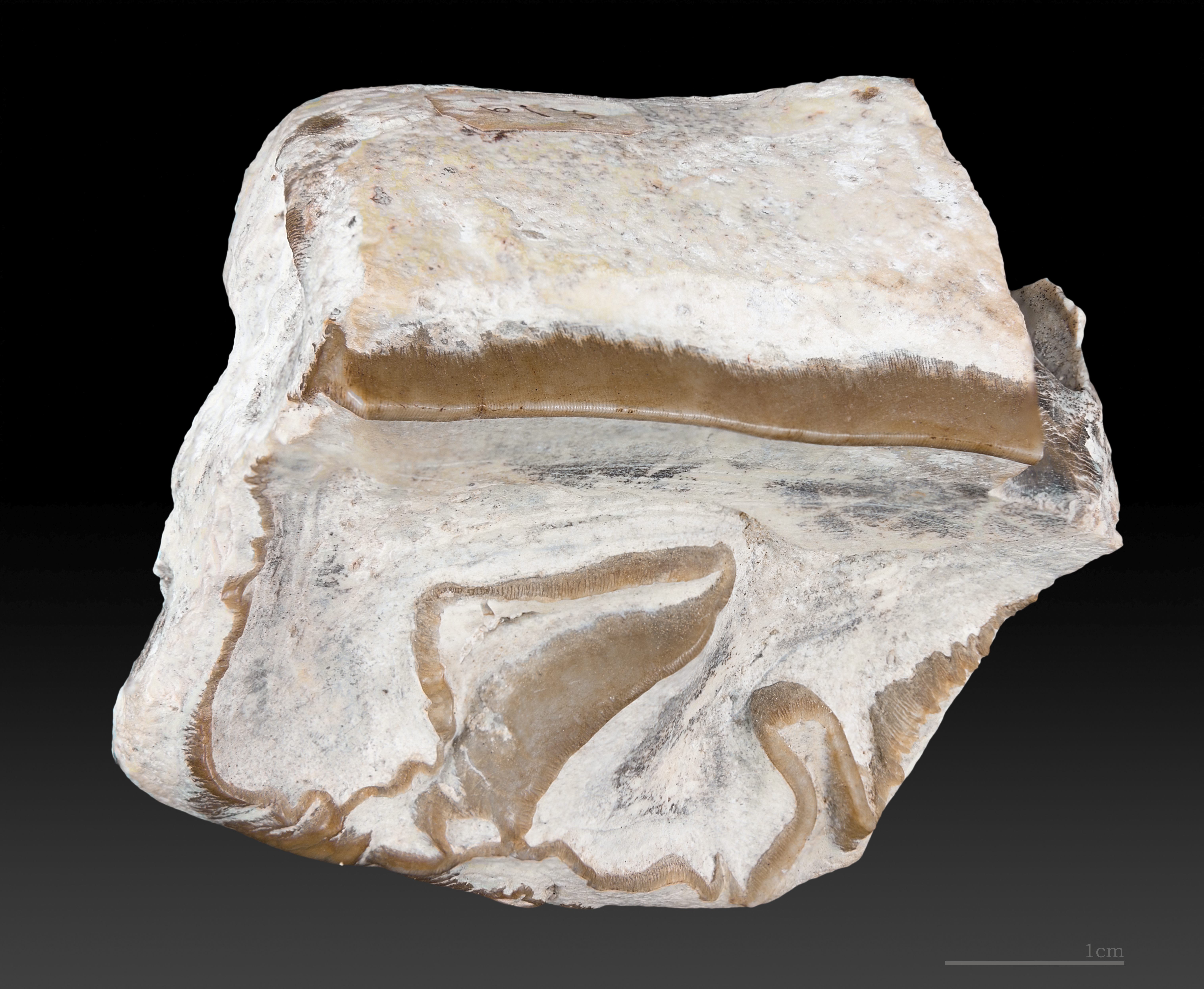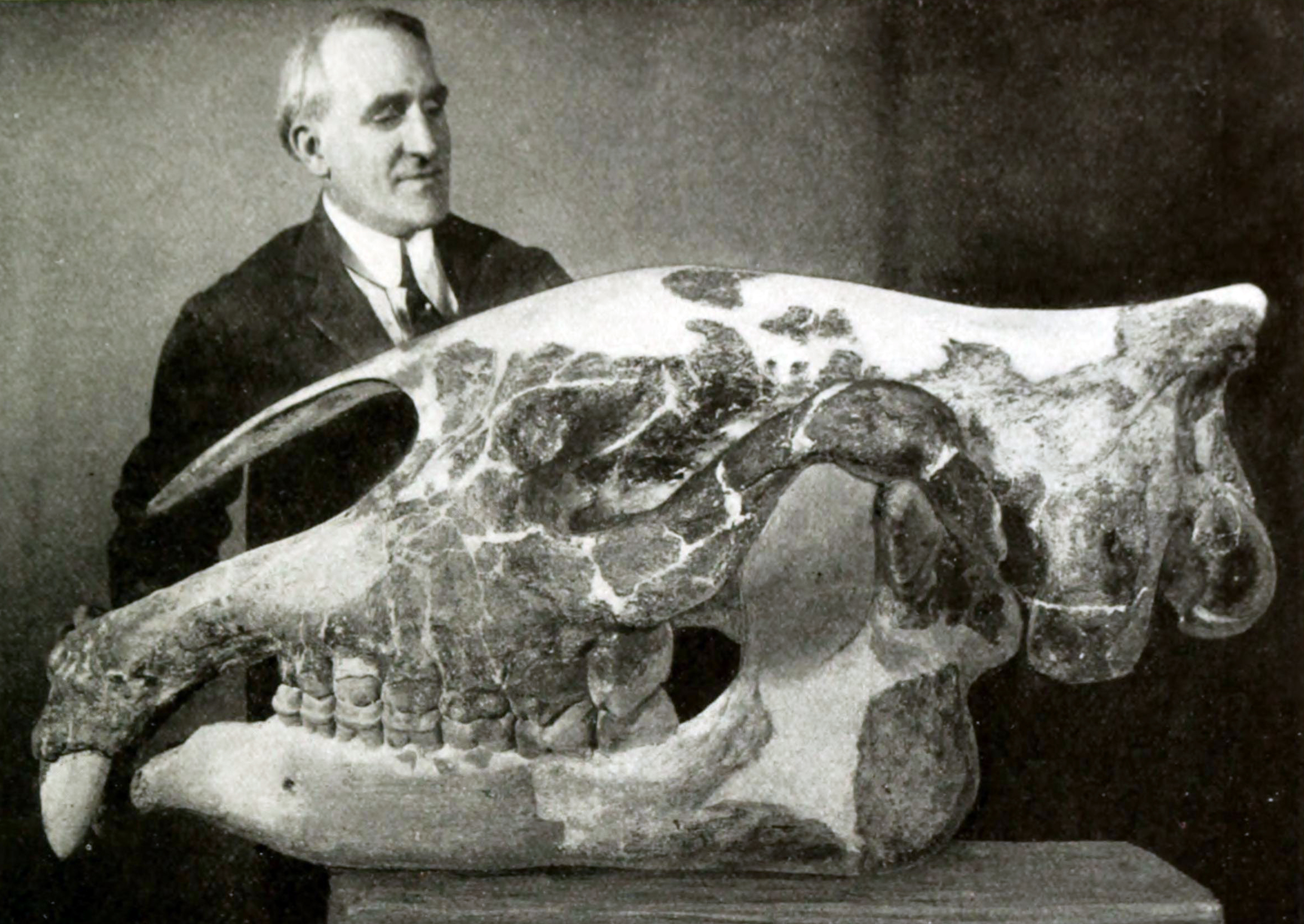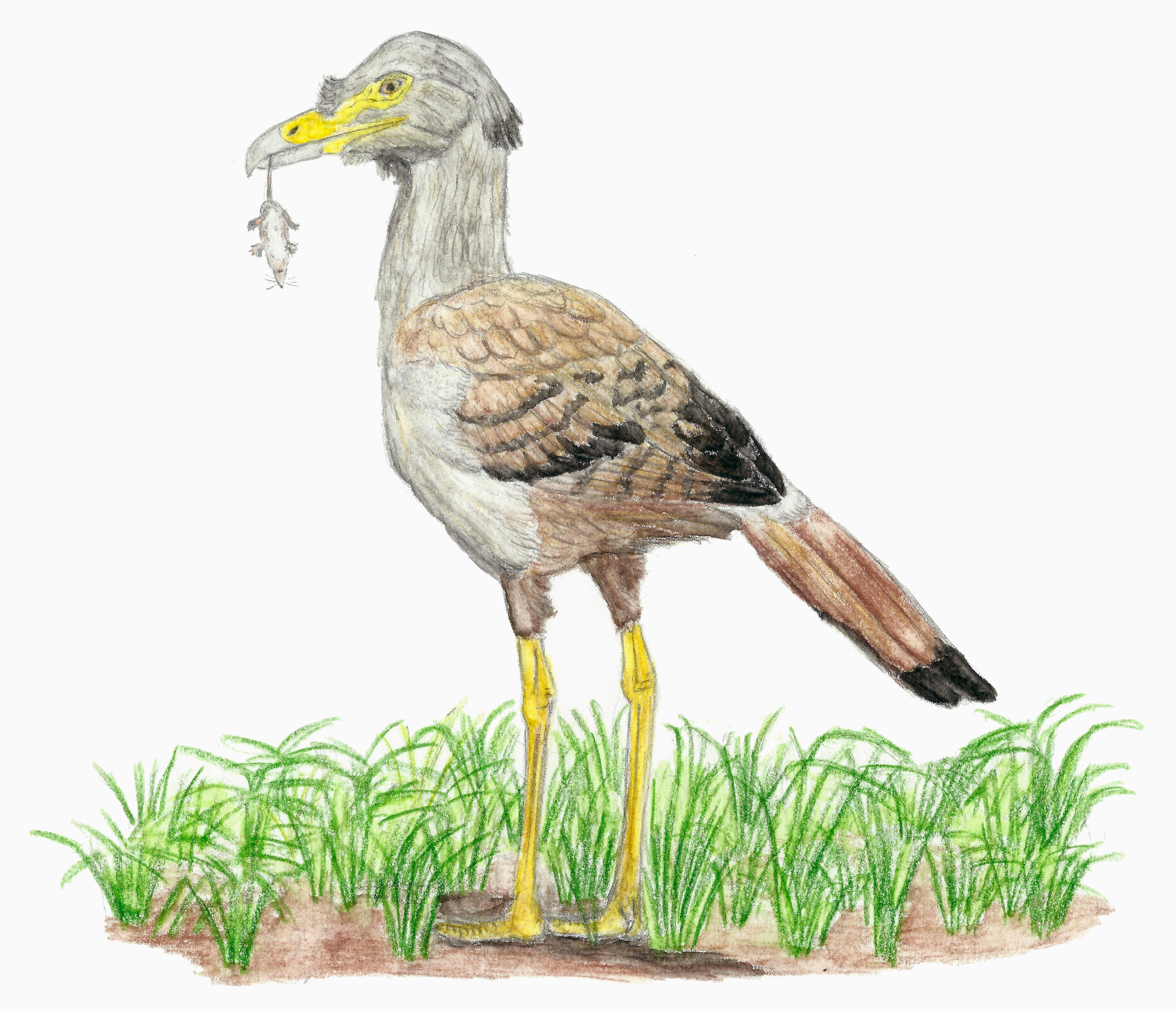|
Metamynodon
''Metamynodon'' is an extinct genus of Amynodontidae, amynodont that lived in North America (White River Fauna) and Asia from the late Eocene until early Oligocene, although the questionable inclusion of ''M. mckinneyi'' could extend their range to the Middle Eocene. The various species were large, displaying a suit of semiaquatic adaptations more similar to those of the modern hippopotamus, despite their closer affinities with rhinoceroses. Taxonomy ''Metamynodon'' is a member of the extinct family Amynodontidae, sometimes called "swamp rhinos" as they were once all believed to be semi-aquatic. It is split into two tribe (biology), tribes: the semi-aquatic Metamynodontini–''Paramynodon'', ''Sellamynodon'', ''Megalamynodon'', and ''Metamynodon''–and the tapir-like Cadurcodontini–''Procadurcodon'', ''Zaisanamynodon'', ''Cadurcodon'', and ''Cadurcotherium''. The Metamynodontini are found across the world, with ''Paramynodon'' from Myanmar, ''Sellamynodon'' from Romania, and ' ... [...More Info...] [...Related Items...] OR: [Wikipedia] [Google] [Baidu] |
Amynodontidae
Amynodontidae ("defensive tooth") is a family of extinct perissodactyls related to true rhinoceroses. They are commonly portrayed as semiaquatic hippo-like rhinos but this description only fits members of the Metamynodontini; other groups of amynodonts like the cadurcodontines had more typical ungulate proportions and convergently evolved a tapir-like proboscis. The Greek name of the family describes their tusks, derived from enlarged canine teeth. Odd-toed ungulates are herbivores, so these tusks would have been used either to deter or defend against predators (as suggested by the name) or perhaps in fights among males. Their fossils have been found in North America, and Eurasia ranging in age from the Middle Eocene to the Early Oligocene, with a single genus (''Cadurcotherium'') surviving into the Late Oligocene in South Asia (Pakistan). Taxonomy †Amynodontidae *Subfamily Amynodontinae **Tribe Cadurcodontini ***Genus '' Cadurcodon'' ***Genus '' Lushiamynodon'' ***Genu ... [...More Info...] [...Related Items...] OR: [Wikipedia] [Google] [Baidu] |
Paraceratherium
''Paraceratherium'' is an extinct genus of hornless rhinocerotoids belonging to the family Paraceratheriidae. It is one of the largest terrestrial mammals that has ever existed and lived from the early to late Oligocene epoch (34–23 million years ago). The first fossils were discovered in what is now Pakistan, and remains have been found across Eurasia between China and the Balkans. ''Paraceratherium'' means "near the hornless beast", in reference to '' Aceratherium'', the genus in which the type species ''P. bugtiense'' was originally placed. The exact size of ''Paraceratherium'' is unknown because of the incompleteness of the fossils. The shoulder height was about , and the length about . Its weight is estimated to have been about . The long neck supported a skull that was about long. It had large, tusk-like incisors and a nasal incision that suggests it had a prehensile upper lip or proboscis (trunk). The legs were long and pillar-like. The lifestyle of ''Paracera ... [...More Info...] [...Related Items...] OR: [Wikipedia] [Google] [Baidu] |
White River Fauna
The White River Fauna are fossil animals found in the White River Group of South Dakota, North Dakota, Wyoming, Colorado and Nebraska in the United States. In southwest South Dakota and northwest Nebraska, these fossils are characteristic of the White River (Missouri River), White River Badlands (including Badlands National Park), though they can be found far beyond the limits of the White River watershed.Scott, W. B., & Jepsen, G. L. (1940). The Mammalian Fauna of the White River Oligocene: Part IV. Artiodactyla. Transactions of the American Philosophical Society, 28(4), 363–746. https://doi.org/10.2307/1005504 In Wyoming, the White River Group is undifferentiated, and is more commonly known as the White River Formation. Further east in Nebraska and South Dakota, the group is divided into the Chadron Formation (lower part) and Brule Formation (upper part). Exposures are less well-investigated in northeast Colorado and scattered sites across western North Dakota. The White River ... [...More Info...] [...Related Items...] OR: [Wikipedia] [Google] [Baidu] |
Badlands National Park
Badlands National Park () is a List of national parks of the United States, national park of the United States in southwestern South Dakota. The park protects of sharply Erosion, eroded buttes and Pinnacle (geology), pinnacles, along with the largest undisturbed mixed grass prairie in the United States. The National Park Service manages the park, with the South Unit being co-managed with the Oglala Lakota tribe. Located within the White River (Missouri River), White River drainage, the Badlands Wilderness protects of the park's North Unit as a designated wilderness area, and is one site where the black-footed ferret, one of the most Endangered species, endangered mammals in the world, was Species reintroduction, reintroduced to the wild. The South Unit, or Stronghold District, includes sites of 1890s Ghost Dances, a former United States Air Force bomb and gunnery range, and Red Shirt Table, the park's highest point at . Authorized as Badlands National Monument on March 4, 1929 ... [...More Info...] [...Related Items...] OR: [Wikipedia] [Google] [Baidu] |
Clive Forster-Cooper
Sir Clive Forster-Cooper, FRS (3 April 1880 – 23 August 1947) was an English palaeontologist and director of the Cambridge University Museum of Zoology and Natural History Museum in London. He was the first to describe ''Paraceratherium'', also commonly known as ''Indricotherium'' or ''Baluchitherium'', the largest known land mammal. Early life Forster-Cooper was born on 3 April 1880 in Hampstead, London, the second child and only son of John Forster Cooper and his wife Mary Emily Miley. His maternal grandfather, Miles Miley, was an amateur botanist and naturalist, and encouraged Clive Forster-Cooper in his interest in natural history. He was educated at Summer Fields School, Oxford, Rugby School.'Forster-Cooper, Sir Clive', in ''Who Was Who'' In 1897 he went up to Trinity College, Cambridge, and took a BA in 1901 and MA in 1904. Early career In 1900, Forster Cooper travelled with John Stanley Gardiner to the Maldive and Laccadive Islands to undertake collections and st ... [...More Info...] [...Related Items...] OR: [Wikipedia] [Google] [Baidu] |
Early Oligocene
The Rupelian is, in the geologic timescale, the older of two age (geology), ages or the lower of two stage (stratigraphy), stages of the Oligocene epoch (geology), Epoch/series (stratigraphy), Series. It spans the time between . It is preceded by the Priabonian Stage (part of the Eocene) and is followed by the Chattian Stage. Name The stage is named after the small river Rupel in Belgium, a tributary to the Scheldt. The Belgian Rupel Group derives its name from the same source. The name Rupelian was introduced in scientific literature by Belgian geologist André Hubert Dumont in 1850. The separation between the group (stratigraphy), group and the stage was made in the second half of the 20th century, when stratigraphers saw the need to distinguish between lithostratigraphy, lithostratigraphic and chronostratigraphy, chronostratigraphic names. Stratigraphic definition The base of the Rupelian Stage (which is also the base of the Oligocene Series) is at the extinction of the foram ... [...More Info...] [...Related Items...] OR: [Wikipedia] [Google] [Baidu] |
Balochistan, Pakistan
Balochistan (; ; , ) is a province of Pakistan. Located in the southwestern region of the country, Balochistan is the largest province of Pakistan by land area but is the least populated one. It is bordered by the Pakistani provinces of Khyber Pakhtunkhwa to the north-east, Punjab to the east and Sindh to the south-east; shares international borders with Iran to the west and Afghanistan to the north; and is bound by the Arabian Sea to the south. Balochistan is an extensive plateau of rough terrain divided into basins by ranges of sufficient heights and ruggedness. It has a large deep sea port, the Port of Gwadar lying in the Arabian Sea. Although it makes up about 44% of the land area of Pakistan, only 5% of it is arable and it is noted for an extremely dry desert climate. Despite this, agriculture and livestock make up about 47% of Balochistan's economy. The name " Balochistan" means "the land of the Baloch people". Largely underdeveloped, its economy is also dominated by n ... [...More Info...] [...Related Items...] OR: [Wikipedia] [Google] [Baidu] |
Paleontologist
Paleontology, also spelled as palaeontology or palæontology, is the scientific study of the life of the past, mainly but not exclusively through the study of fossils. Paleontologists use fossils as a means to classify organisms, measure geologic time, and assess the interactions between prehistoric organisms and their natural environment. While paleontological observations are known from at least the 6th century BC, the foundation of paleontology as a science dates back to the work of Georges Cuvier in 1796. Cuvier demonstrated evidence for the concept of extinction and how life of the past was not necessarily the same as that of the present. The field developed rapidly over the course of the following decades, and the French word ''paléontologie'' was introduced for the study in 1822, which was derived from the Ancient Greek word for "ancient" and words describing relatedness and a field of study. Further advances in the field accompanied the work of Charles Darwin who popu ... [...More Info...] [...Related Items...] OR: [Wikipedia] [Google] [Baidu] |
White River Formation
The White River Formation is a geologic formation of the Paleogene Period, in the northern Great Plains and central Rocky Mountains, within the United States. It has been found in northeastern Colorado, Dawes County in western Nebraska, Badlands of western South Dakota, and Douglas area of southeastern Wyoming. Fossil record The geologic formation preserves fossils dating back to the Eocene and Oligocene Epochs of the Paleogene Period, during the Cenozoic Era. It contains the most complete Late Eocene−Priabonian and Early Oligocene−Rupelian vertebrate record in North America. [...More Info...] [...Related Items...] OR: [Wikipedia] [Google] [Baidu] |
Cadurcodon
''Cadurcodon'' is an extinct genus of amynodont that lived during the Late Eocene to the Oligocene period. Fossils have been found throughout Mongolia and China. It may have sported a tapir-like proboscis A proboscis () is an elongated appendage from the head of an animal, either a vertebrate or an invertebrate. In invertebrates, the term usually refers to tubular arthropod mouthparts, mouthparts used for feeding and sucking. In vertebrates, a pr ... due to the distinct features found in fossil skulls. References Rhinocerotoidea Eocene rhinoceroses Oligocene rhinoceroses Cenozoic mammals of Europe Cenozoic mammals of Asia Prehistoric Perissodactyla Fossil taxa described in 1924 Prehistoric rhinoceroses Prehistoric placental genera {{Paleo-oddtoedungulate-stub ... [...More Info...] [...Related Items...] OR: [Wikipedia] [Google] [Baidu] |







